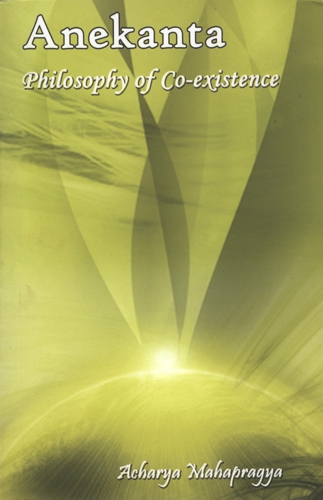Chapter 5

The Axioms of Anekānta
The Concomitance of One and Many
There are dialogues which throw light on the concomitance of one and many. The following dialogue is an illustration in point:
Somila: | 'Are you one or many, O Lord?' |
Lord: | 'I am one in respect of substance, O Somila. However, in respect of knowledge and intuition I am two. In respect of parts (constituents of a substance), I am immutable, eternal and unchanging. I am many in respect of the ever-changing phases of my consciousness. |
The nature of the substance and modes entails the relationship of one and many, universal and particular, permanent and impermanent. The substance is one while the modes are many. The substance stands for the universal and the modes for the particular. The substance is eternal while the modes are changeable.
The universal is two fold - the horizontal (tiryag) and the vertical (ūrdhva). The proposition 'I am one' refers to the horizontal universal which is the experience of unity (ekatva), pervasiveness (anyatva) and essence (dhruvatva). The proposition 'I am many' in respect of the successive functions of my consciousness represents the vertical universal. There is the experience of before and after in it. The horizontal universal is the essence pervading through the different contemporary states, which establishes their unity. The vertical universal consists in the successive changes that are similar, which establishes a unity running through the past, present and future.
We find elaborate investigations into the nature of non-absolutism and the doctrine of relativism in the Agamic literature. The dictum - no word of the jin (omniscient) is independent of naya (a particular viewpoint) is the reputed Principle of Agamic exegesis. Each proposition of the Āgama was explained by means of the nay as. The tradition says that the Drstivāda, the twelfth text of the basic scripture, contained philosophical discussions based on different viewpoints. By the third century B.C. the main part of the text was lost, leaving behind only a fragment of it. Vācaka Umāsvāti and Acārya Siddhasena were the pioneers in the application of the nayas to the different philosophical problems of their times and Ācārya Samantabhadra carried this process to its consummation by including a good number of new issues that had cropped up by his time. Siddhasena clearly demonstrated that the Sāmkhya system illustrated the substantial standpoint whereas the Buddhist philosophy is a representative of the modal viewpoint. In this way he made an evaluation of all the systems of thought that were extant, from the relativistic standpoint, with reference to different nayas. The most important treatise of his on the subject is the Sanmati Tarka, while the most significant work of Samantabhadra on this subject is the Āpta-Mimāmsā, in which he has most successfully been able to apply the principle of sevenfold predication to the current problems of universal and particular, identity and difference, existence and non-existence and such other mutually opposed doctrines to establish a synthesis between them. Both these treatises can be regarded as pioneer works of the philosophy of non-absolutism.
 Acharya Mahaprajna
Acharya Mahaprajna

